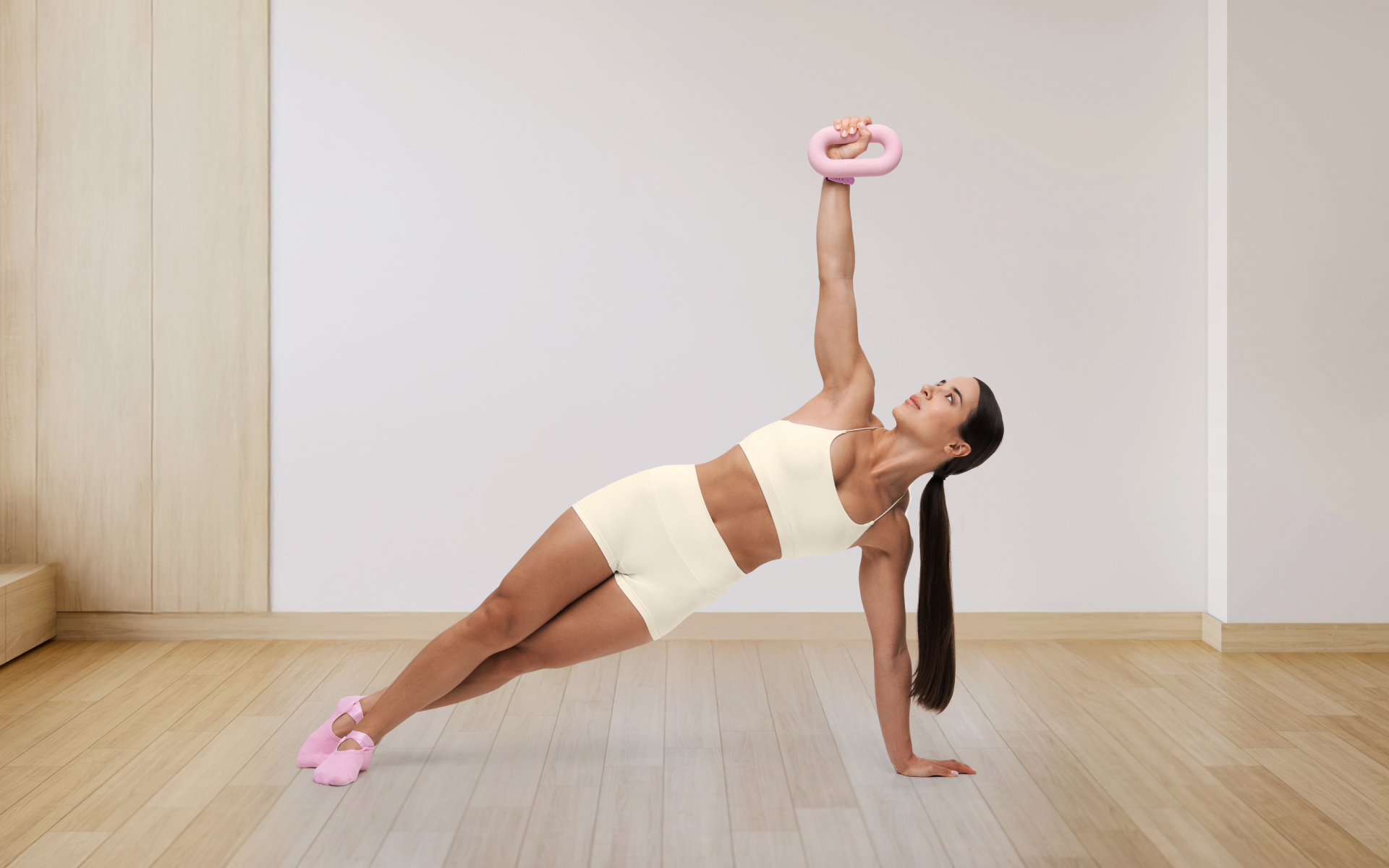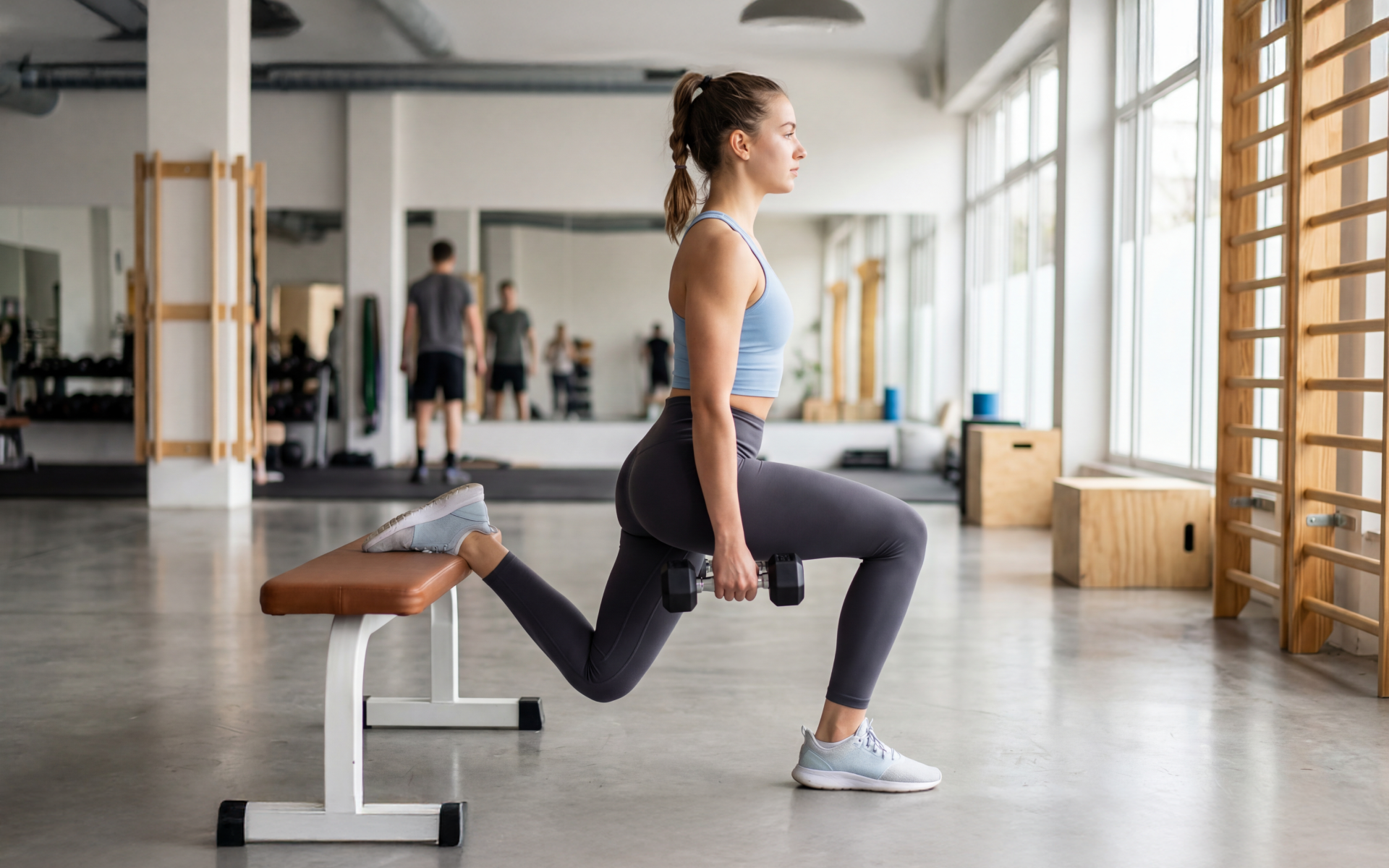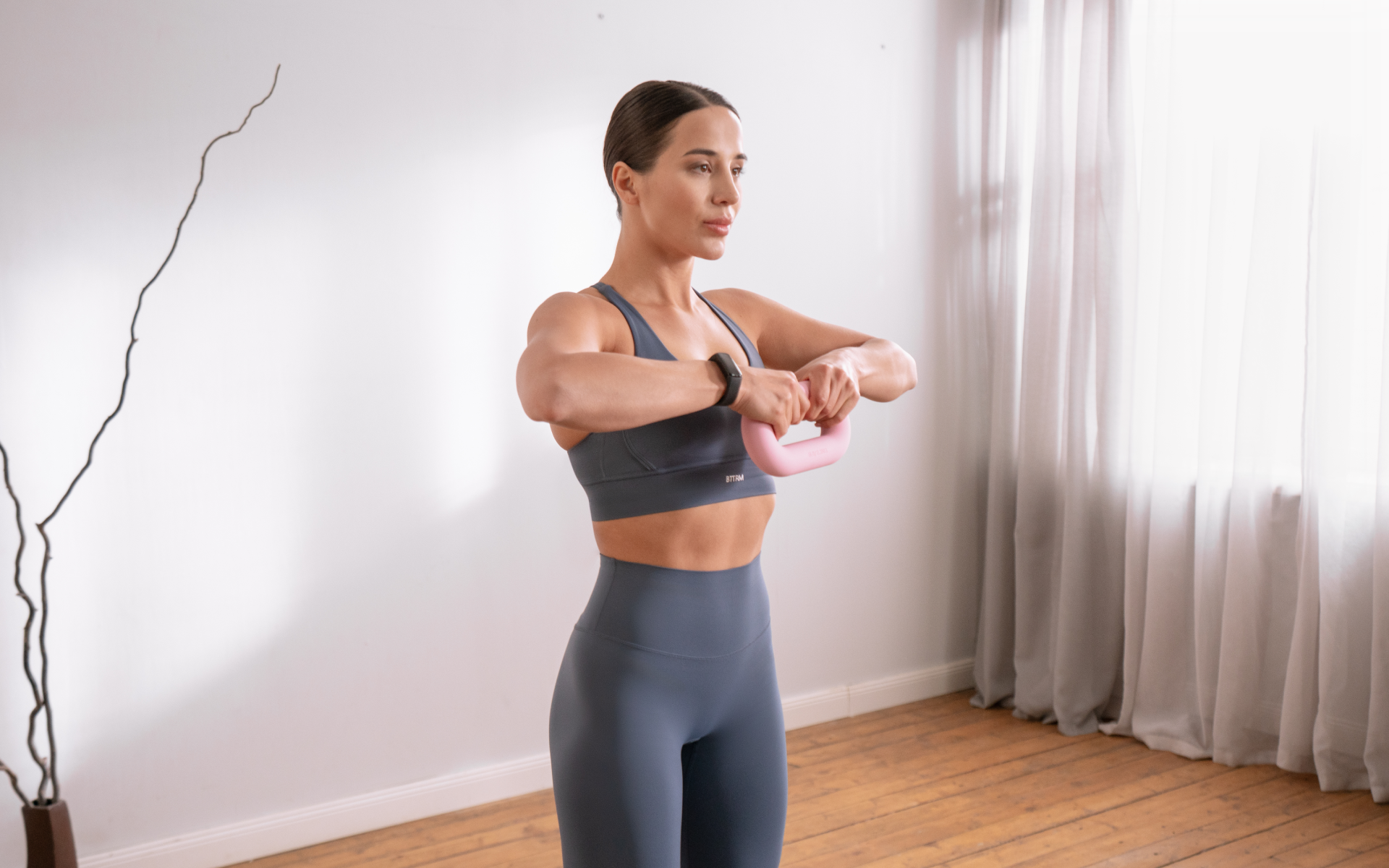The concept of training six days a week may sound extreme or even counterproductive. However, when it’s structured correctly, a 6-day workout routine can deliver remarkable results for both beginners and experienced fitness enthusiasts.
Knowing how to balance intensity, recovery, and variety can create sustainable progress rather than burnout. This approach allows your body to adapt progressively while maintaining the neurological benefits that come from consistent movement patterns.
In this comprehensive guide, we’ll walk you through the science behind six-day training, provide you with a complete workout framework, and help you recognize the warning signs of overtraining.
Is It a Good Idea to Work Out 6 Days a Week?
The answer depends on several factors, including your training experience, recovery capacity, and how you structure your workouts.
Research in exercise physiology has shown that muscle protein synthesis – the process by which your body builds new muscle tissue – peaks within 24-48 hours after resistance training and returns to baseline levels within 72 hours (1, 2).
This timeline suggests that training the same muscle groups every day wouldn’t be optimal. However, a 6-day workout routine becomes highly effective when you implement proper split training protocols.
Studies published in the Journal of Sport and Health Science demonstrate that higher training frequencies can lead to superior muscle growth and strength gains when volume is distributed appropriately (3). The key principle here is training different muscle groups on different days, allowing adequate recovery time for each system.
From a neurological perspective, frequent training sessions help reinforce motor patterns and improve neuromuscular coordination (4). Your nervous system adapts to movement patterns through repetition (5), which makes six-day routines particularly beneficial for skill acquisition and movement quality improvements.
The most important factor is intensity management. A 6-day workout plan for beginners should emphasize moderate intensity with higher frequency, rather than maximum effort every session. This approach promotes consistent adaptation while minimizing the risk of overuse injuries.
What’s Good About a 6-Day Workout Routine?
A well-structured 6-day workout routine offers several distinct advantages that can accelerate your fitness progress when implemented correctly.
- Enhanced Habit Formation
Training six days a week creates powerful neurological pathways that make exercise feel automatic. Research in behavioral psychology has shown that daily habits are easier to maintain than sporadic ones. When you train almost every day, exercise becomes integrated into your identity rather than something you have to motivate yourself to do (6).
- Increased Training Volume
Higher training frequency allows you to distribute your weekly volume across more sessions (4). Instead of cramming everything into three or four intense workouts, you can spread the load more evenly. This approach often leads to better recovery between sessions and improved performance quality.
BetterMe: Health Coaching app helps you achieve your body goals with ease and efficiency by helping to choose proper meal plans and effective workouts. Start using our app and you will see good results in a short time.
- Improved Movement Quality
Frequent practice of movement patterns enhances neuromuscular coordination and motor learning. Your nervous system becomes more efficient at recruiting the right muscles at the right time (7), which leads to better exercise form and a reduced injury risk.
- Metabolic Benefits
Regular training sessions help regulate blood sugar levels, improve insulin sensitivity, and maintain an elevated metabolic rate throughout the week (8). A 6-day workout routine for weight loss can be particularly effective because it creates consistent energy expenditure and metabolic stimulus.
- Mental Health Advantages
Exercise releases endorphins and other neurotransmitters that improve mood and cognitive function (9). Training six days a week provides more frequent opportunities for these neurochemical benefits, often resulting in improved stress management and mental clarity.
- Flexibility in Programming
With six training days, you can dedicate specific sessions to different training modalities. This may include strength training, cardiovascular work, mobility sessions, and sport-specific skills, creating a more comprehensive fitness program.
Read more: How To Start A Beginner Calisthenics Routine (And Stick To It)
What Is a Balanced 6-Day-a-Week Workout Plan?
A balanced 6-day workout plan requires strategic programming that addresses all major movement patterns while allowing adequate recovery. Here’s a comprehensive framework that is recommended for beginners and intermediate trainees.
Upper/Lower Split Structure
Day 1: Upper Body – Push Focus
- Push-ups or chest press: 3 sets of 8-12 reps
- Chest fly: 3 sets of 8-12 reps
- Shoulder press: 3 sets of 10-15 reps
- Tricep dips or extensions: 3 sets of 10-15 reps
- Lateral raises: 2 sets of 12-20 reps
- Core work: 10-15 minutes
Day 2: Lower Body – Quad Dominant
- Squats (bodyweight or loaded): 3 sets of 8-12 reps
- Leg press or step-ups: 3 sets of 12-15 reps
- Lateral lunges 3 sets of 12-15 reps each leg
- Calf raises: 3 sets of 15-20 reps
- Quadricep stretches: 10 minutes
Day 3: Upper Body – Pull Focus
- Pull-ups or rows: 3 sets of 6-12 reps
- Seated cable row: 3 sets of 6-12 reps
- Lat pulldowns: 3 sets of 10-15 reps
- Bicep curls: 3 sets of 12-15 reps
- Reverse flies: 2 sets of 15-20 reps
- Upper back mobility: 10 minutes
Day 4: Lower Body – Hip Dominant
- Deadlifts (modified for beginners): 3 sets of 8-12 reps
- Glute bridges: 3 sets of 15-20 reps
- Single leg Romanian deadlifts: 3 sets of 10-12 reps per leg
- Hamstring curls: 3 sets of 12-15 reps
- Hip mobility work: 10 minutes
Day 5: Full Body
- Burpees: 3 sets of 5-10 reps
- Mountain climbers: 3 sets of 20 total
- Plank variations: 3 sets of 30-60 seconds
- Farmer’s walks: 3 sets of 30-60 seconds
- Dynamic stretching: 15 minutes
Day 6: Active Recovery/Cardio
- Light cardio: 20-30 minutes
- Yoga or stretching: 20-30 minutes
- Foam rolling: 10-15 minutes
- Breathing exercises: 5-10 minutes
Progression Guidelines
Start with bodyweight exercises and gradually add resistance as your strength improves. The 6-day workout routine for muscle mass should progressively increase in intensity and volume over 4-6 week cycles.
Beginners should focus on learning proper movement patterns before adding significant load. A 6-day workout plan for beginners should prioritize form and consistency over intensity.
Women who are following a 6-day gym workout schedule for female trainees can use this same structure, adjusting weights and repetitions based on their individual strength levels and goals.
Can You Lift Weights 6 Days a Week?
Lifting weights six days a week can be highly effective when programmed correctly. The key lies in understanding muscle recovery patterns and implementing appropriate split routines.
Research from the American College of Sports Medicine indicates that trained individuals can handle higher training frequencies than previously thought (10).
Furthermore, a study published in the Journal of Sports Medicine and Physical Fitness found that experienced lifters could train each muscle group twice per week with superior results compared to once-per-week training (11).
The Science of Recovery
Muscle protein synthesis elevates for 24-48 hours after resistance training (1, 2). This means that if you train your chest on Monday, it’s physiologically ready for another stimulus by Wednesday or Thursday. A 6-day workout routine to lose weight can incorporate resistance training by focusing on different muscle groups each day.
Effective Split Strategies
Push/Pull/Legs repeated twice per week works exceptionally well for six-day lifting schedules. This allows each muscle group 48-72 hours of recovery between sessions while maintaining high training frequency.
Upper/lower splits repeated three times per week also provide excellent results. Each muscle group gets trained three times per week with adequate recovery between sessions.
Volume Management
The total weekly volume matters more than the frequency. Research has shown that 10-20 sets per muscle group per week optimizes hypertrophy for most individuals (12). Spreading this volume across multiple sessions often leads to better performance and recovery.
Intensity Considerations
Not every lifting session needs to be maximum effort. Implementing autoregulation – adjusting intensity based on how you feel – helps prevent overreaching while maintaining progress (13). Some sessions should focus on technique and moderate loads, while others can emphasize higher intensity.
Read more: Does Calisthenics Make Females’ Shoulders Bigger?
Is Cardio 6 Days a Week Too Much?
Cardiovascular exercise six days a week can be appropriate for many individuals, but the type, intensity, and duration matter significantly. The cardiovascular system generally recovers faster than the musculoskeletal system, which makes frequent cardio sessions more feasible than daily high-intensity strength training.
Zone-Based Training Approach
The most effective approach involves varying cardio intensity throughout the week. Research supports the 80/20 principle: 80% of your cardio should be at low to moderate intensity, with 20% at high intensity (14).
Low-intensity steady-state cardio (walking, easy cycling, swimming) can be performed daily with minimal recovery concerns. This type of exercise actually promotes blood flow and can aid recovery from more intense training sessions.
High-Intensity Considerations
High-intensity interval training (HIIT) creates more systemic stress and requires longer recovery periods (15). Performing HIIT more than 2-3 times per week can lead to overtraining symptoms and decreased performance.
Individual Factors
Your cardio tolerance is dependent on several factors:
- Training history and current fitness level
- Age and recovery capacity
- Sleep quality and stress levels
- Nutritional status
- Other training demands
You’re likely handling your cardio load well if you:
- Feel energized after most sessions
- Sleep well and wake refreshed
- Maintain consistent performance
- Experience gradual improvements in endurance
A 6-day workout plan to build muscle can include daily cardio if it’s primarily low-intensity and doesn’t interfere with recovery from strength training sessions.
What Are Signs of Over-Exercising?
Recognizing overtraining symptoms early is essential for maintaining long-term progress and preventing injury. Your body provides clear signals when training stress exceeds recovery capacity.
Persistent Fatigue
Feeling tired after workouts is normal, but persistent fatigue that doesn’t improve with rest indicates overreaching. This fatigue often feels different from normal tiredness – it’s a deep, systemic exhaustion that affects daily activities.
Decreased Performance
Are your lifts stalling, or do you find yourself running slower than usual? A noticeable and unexplained decline in performance – despite consistent effort – is a hallmark sign of over-exercising. For example, you may struggle to complete sets or notice that weights you previously lifted with ease suddenly feel much heavier.
Research suggests that when athletes chronically exceed their recovery capacity, neuromuscular fatigue can accumulate, directly impairing strength, power, and endurance output (16). Rather than pushing harder, this is your body prompting you to step back and reassess your training volume and rest.
When it comes to weight loss, progress is made by inches, not miles, so it’s much harder to track and a lot easier to give up. The BetterMe: Health Coaching app is your personal trainer, nutritionist, and support system all in one. Start using our app to stay on track and hold yourself accountable!
Increased Resting Heart Rate
Monitoring your resting heart rate can be a valuable tool. An elevated morning heart rate compared to your baseline often signals insufficient recovery (17).
This is your body’s way of coping with built-up physiological stress. If you consistently notice your pulse running higher than usual, consider this to be a red flag that you’re not fully recovered.
Sleep Disturbances
Here’s a question: Have you ever found it tricky to fall asleep despite feeling physically exhausted? Overtraining disrupts typical sleep patterns, sometimes causing insomnia or restless nights. The body’s stress response – driven by higher cortisol levels – may be to blame (18). Sleep is when your muscles repair and grow. If you’re sacrificing rest, you’re undermining your own progress.
Elevated Soreness and Increased Injuries
Lasting soreness that extends for days – well beyond the usual 24-48-hour window – suggests your muscles aren’t bouncing back. Even more, a spike in injuries such as strains or joint issues may indicate chronic overload. Studies have consistently shown that insufficient recovery heightens injury risk.
Lack of Enjoyment
Beyond the gains, enjoying your workouts is key to making exercise a lifetime habit. If you’re constantly dragging yourself out of bed or dreading the weight room, something’s off. It could be that you’re not giving your body enough rest to recharge and replenish energy stores.
Boredom and Plateau
On the flip side, a lack of progress can also indicate inadequate recovery time. Without proper rest, muscles can’t repair and grow, preventing gains in strength and endurance. This can lead to boredom and plateaus in performance, in addition to demotivation from seeing little progress despite consistent effort.
Frequently Asked Questions
Is lifting weights 6 days a week too much?
For many people, exercising six days a week can be safe and effective, as long as you balance intensity, allow for muscle group rotation, and prioritize sleep and nutrition. However, without adequate recovery, you may increase the risk of injury or overtraining symptoms. Listen to your body and adjust as needed.
Does going to the gym 6 days a week build size?
Training six days a week provides ample stimulus for muscle growth, particularly when you follow a structured resistance program and consume enough calories and protein. Growth still depends on recovery – rest, proper nutrition, and sleep are crucial for supporting muscle repair and gains.
What happens if I skip a rest day?
Skipping rest days can lead to accumulated fatigue, impaired performance, and higher injury risk. Your muscles need time to recover and adapt, so routinely bypassing rest may actually slow your progress over time.
Is 2 hours of cardio a day too much?
For most people, 2 hours of cardio daily is excessive and can lead to overuse injuries, hormonal imbalance, or muscle loss, particularly if it’s not paired with adequate fueling and strength training. Based on current guidelines, moderate-intensity cardio for 150-300 minutes per week is sufficient for general health. However, it comes down to the type of cardiovascular exercise you are doing. A slow-paced walk is still considered a cardiovascular exercise and you could likely walk for 2+ hours a day with minimal side effects.
The Bottom Line
A 6-day-a-week workout plan offers a powerful framework for building strength, endurance, and discipline. By distributing volume across different muscle groups, you give each area the targeted stimulus it needs for growth while minimizing overlap and burnout.
However, success with this frequency hinges on balance – prioritizing both structured programming and sufficient recovery. Listening to your body, adapting intensity, and scheduling rest are all essential for long-term progress and injury prevention.
DISCLAIMER:
This article is intended for general informational purposes only and does not serve to address individual circumstances. It is not a substitute for professional advice or help and should not be relied on for making any kind of decision-making. Any action taken as a direct or indirect result of the information in this article is entirely at your own risk and is your sole responsibility.
BetterMe, its content staff, and its medical advisors accept no responsibility for inaccuracies, errors, misstatements, inconsistencies, or omissions and specifically disclaim any liability, loss or risk, personal, professional or otherwise, which may be incurred as a consequence, directly or indirectly, of the use and/or application of any content.
You should always seek the advice of your physician or other qualified health provider with any questions you may have regarding a medical condition or your specific situation. Never disregard professional medical advice or delay seeking it because of BetterMe content. If you suspect or think you may have a medical emergency, call your doctor.
SOURCES:
- A Review of Resistance Training-Induced Changes in Skeletal Muscle Protein Synthesis and Their Contribution to Hypertrophy (2015, link.springer.com)
- The time course for elevated muscle protein synthesis following heavy resistance exercise (1995, pubmed.ncbi.nlm.nih.gov)
- The influence of resistance exercise training prescription variables on skeletal muscle mass, strength, and physical function in healthy adults: An umbrella review (2024, sciencedirect.com)
- Higher Training Frequency Is Important for Gaining Muscular Strength Under Volume-Matched Training (2018, frontiersin.org)
- The knowns and unknowns of neural adaptations to resistance training (2021, link.springer.com)
- The Importance of Creating Habits and Routine (2018, pmc.ncbi.nlm.nih.gov)
- The Effect of Resistance Training on Motor Unit Firing Properties: A Systematic Review and Meta-Analysis (2022, frontiersin.org)
- Blood Glucose and Exercise (2022, diabetes.org)
- Role of Physical Activity on Mental Health and Well-Being: A Review (2023, pmc.ncbi.nlm.nih.gov)
- Progression Models in Resistance Training for Healthy Adults (2009, journals.lww.com)
- Effects of Resistance Training Frequency on Measures of Muscle Hypertrophy: A Systematic Review and Meta-Analysis (2016, link.springer.com)
- A Systematic Review of The Effects of Different Resistance Training Volumes on Muscle Hypertrophy (2022, pmc.ncbi.nlm.nih.gov)
- Effects of subjective and objective autoregulation methods for intensity and volume on enhancing maximal strength during resistance-training interventions: a systematic review (2021, pmc.ncbi.nlm.nih.gov)
- The training intensity distribution among well-trained and elite endurance athletes (2015, frontiersin.org)
- High-intensity interval training induces a modest systemic inflammatory response in active, young men (2014, pmc.ncbi.nlm.nih.gov)
- Training Load and Fatigue Marker Associations with Injury and Illness: A Systematic Review of Longitudinal Studies (2016, link.springer.com)
- Analysis of Heart Rate Variability and Implication of Different Factors on Heart Rate Variability (2021, pmc.ncbi.nlm.nih.gov)
- Can Sleep Be Used as an Indicator of Overreaching and Overtraining in Athletes? (2018, frontiersin.org)













